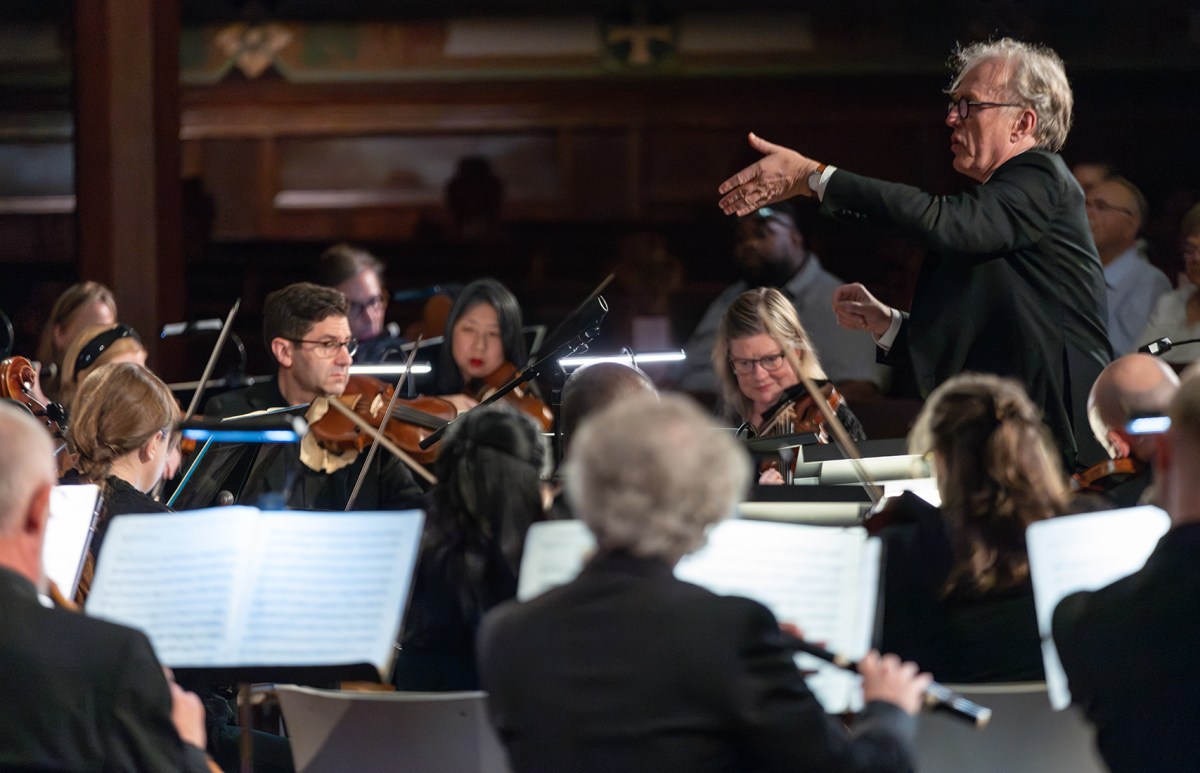Johann Sebastian Bach might not recognize the violin Cynthia Roberts will play in Long Beach next week, because he wasn’t born until 1685 and her instrument is a replica of one made in 1620.
Though it looks similar to modern versions at a quick glance, small distinctions such as less tension on the strings, a thinner and lighter bow and a more relaxed hold create “a whole different sound palette,” she said in a recent phone interview. The idea is to get the instrument to sound the way it did in the 17th century, when Bach and his contemporaries were composing for it.
As concertmaster of Musica Angelica, Roberts will be playing her violin on Oct. 18 at the baroque chamber ensemble’s “Quattrocento: Four Centuries of Italian Music” concert in the First Congregational Church of Long Beach. (The concert will be repeated the next day in the First Congregational Church of Los Angeles.)
One of the world’s leading baroque violinists, Roberts is in high demand, so she spends much of her time away from her home in New York City, where she is on the faculty of the Juilliard School. She doesn’t mind the travel.
“I mean, concerts in really good places,” she said. “If I’m free, I’ll never turn down an exciting concert.”
 Baroque violinist Cynthia Roberts (right) plays alongside longtime friends and some former students with Musica Angelica. (Courtesy of Musica Angelica)
Baroque violinist Cynthia Roberts (right) plays alongside longtime friends and some former students with Musica Angelica. (Courtesy of Musica Angelica)
In addition to educating young musicians at Juilliard, Roberts flies to a teaching gig at the University of Texas once a month. She has been combining a concert career with teaching as many students as possible for more than 30 years, with the intent of helping grow public interest in baroque music. She often now finds herself playing onstage with some of the musicians she has trained, including several in Musica Angelica.
Speaking from her apartment on her first day off in weeks, Roberts said that as soon as she finished her interview with the Signal Tribune, she would be back to learning the sheet music for her upcoming concerts.
“I love doing concerts with groups that aren’t huge, big groups,” Roberts said of the show in Long Beach. “There’s more individuality, everybody has a voice and you’re kind of playing chamber music with each other.”
She’ll be playing in an even smaller group on the same day, during a free public performance at the Long Beach Dana Neighborhood Library at noon. As part of Musica Angelica’s community outreach program, she, associate music director Gonzalo Ruiz and principal cellist Alexa Haynes-Pilon will present a one-hour preview of the evening show to a mixed audience of music students, mothers with babies, children and older adults — including a question-and-answer session after the music.
Roberts began her musical journey by learning to play the piano at age 3 with the encouragement of her mother. Having a pianist savant as a matriarch meant that Roberts and her siblings spent many evenings attending classical concerts. It was at one of those concerts that Roberts heard the screeching, moaning sounds of the violin and found her love.
She recognizes the legacy she’s leaving for the next generation of baroque enthusiasts, much like Elizabeth Bloomingstock, who taught many baroque players in California. It’s this growing baroque gospel movement that allows Roberts to speak about her concerts in Berlin and Japan with the same excitement as the one in the Long Beach library.
“It’s great, it’s just fantastic. I’ve had incredible experiences just to be lucky enough to play,” she said. “I have tons of energy and passion because the music is so great.”
“Quattrocentro: Four Centuries of Italian Music,” concert by Musica Angelica, Oct. 18 at 7:30 p.m. First Congregational Church of Long Beach, 241 Cedar Ave., Long Beach.
Patrons are invited to a hosted reception before the concert at 6 p.m. Hors d’oeuvres and beverages will be served. Tickets, $43.14 to $85.16, and season pass information are available at https://www.musicaangelica.org/. Call 562-276-0865 for information.
This feature is produced by the Journalism Arts Initiative, which is underwritten by donations from arts organizations and others interested in supporting excellence in arts journalism.


